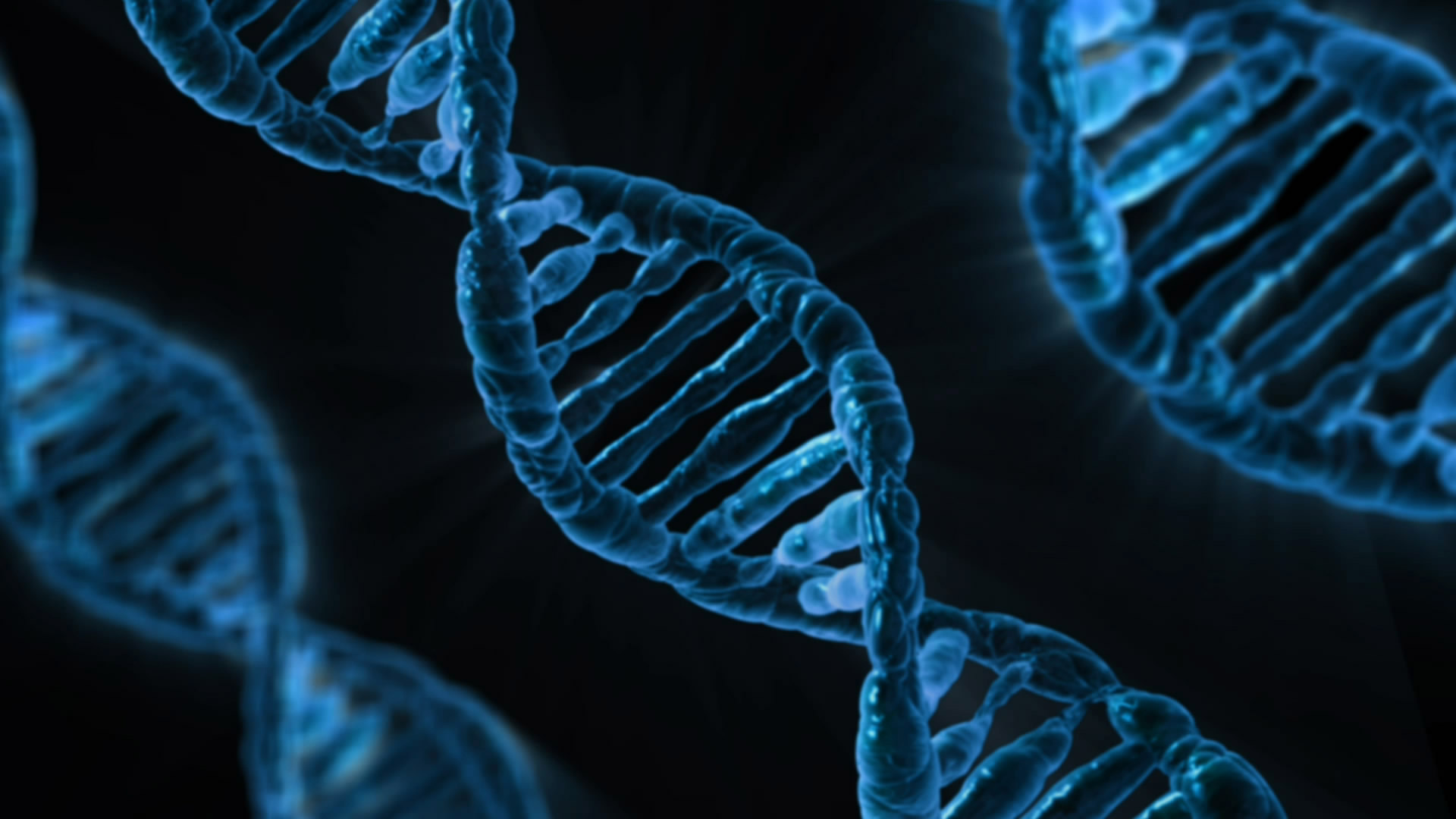DNA is a double-sided helix of encoded information that we inherit from our parents. It looks much like a ladder with rungs (steps) that someone twisted into a long spiral. The sides of the ladder are a “backbone” or “chain” of “Nucleotides” or “Bases” that are thankfully nicknamed by a single letter of A, C, T, or G. Remember that DNA is inside the nucleus of the cell.
Each “step” or “rung” of the DNA ladder is made of a Hydrogen bond connection between two of the Nucleotide bases, thereby forming a “Base Pair”. One can think of a Hydrogen bond like weak magnets sticking together, easily separated but will go right back together. Nucleotide “A” naturally fits with “T”, and Nucleotide “C” naturally fits with “G”. So, A/T and C/G represent the normal configuration of each unit/rung in the ladder. One could read the letters sequentially along one side of the ladder and come up with something like “ACAGGTGAAGTC”. Your DNA contains millions of these Base Pairs (ladder rungs) !
RNA is similar to DNA in that it has own bases, but they have slightly different structure and names. However, RNA only has one “Backbone” strand, not two, so it is more like a man’s comb with a single backbone and a bunch of teeth sticking out. This comb can twist on itself or even fold on itself and stick together ending up looking a like a hairpin or cloverleaf though. RNA gets quite creative in the ways it can fold or even loop on itself or stack with others to form unique 3-D structures. Although there are several powerful types of RNA, we will only be looking at one of them here.
When DNA opens up (the rungs break in half so that the ladder backbones splay apart), RNA can be constructed along side the exposed ladder chain. The RNA strand that is built, is matched to the DNA’s A, T, C, and G molecules. The RNA bases that match to the DNA molecules are called U, A, G, and C, respectively. An enzyme called RNA polymerase does the matching of RNA bases to the exposed DNA bases as it travels along the opened DNA in one direction.
The RNA polymerase fuses the corresponding RNA bases together as it “reads” the opened DNA ladder, and the new string of RNA floats away when the enzyme is finished. The new RNA is now called mRNA, which stands for messenger RNA.
The new messenger RNA strand leaves the nucleus of the cell to travel to the cell’s Endoplasmic Reticulum (an organelle that is a factory for making proteins), and is then “translated” into a protein molecule by enzymes inside the Endoplasmic Reticulum. Each set of 3 RNA bases, called a “Triplet”, encodes for an Amino Acid (a simple, unique protein building block molecule). For example, “GGA” is translated into the Amino Acid called Glycine. The RNA is thus a template for protein synthesis as the enzyme moves along the RNA and “translates” it.

Summary: “from Russian to blocks”
DNA is “trans-scripted” (re-written) into RNA (like going from Russian letters to English letters).
RNA letters are “translated” into Amino Acids (like going from 3-letter English words to building blocks).
Copyright 2018 Peak Health LLC

